i've gotten some nice encouragement from my human readers so far about this, but also a few questions. one of these ponderings made me think i should start doing some more Palaeo FACTS.
the source of the email doesn't help mind you, and i'll ignore most of what he had to say. however the germ-man (my first real enemy) did have one very legitimate question inside this otherwise nasty email... he sends me about 2 mean emails a week... at least these days. i guess he misses me. what with my not having been in dunedin for most of the year.
his question, again ignoring most of nasty wording surrounding it, is:
 so why is it small brained lizard you keep referring to your friend-girl as something different than you? you r both stupid, ugly, hideous... etc. his list of nasty descriptives goes on for a while... lizards. other than her not being as unshort as you what is the difference?
so why is it small brained lizard you keep referring to your friend-girl as something different than you? you r both stupid, ugly, hideous... etc. his list of nasty descriptives goes on for a while... lizards. other than her not being as unshort as you what is the difference?well despite the germ-man being a really mean person, i have to admit he raises a good question for my human readers out there...
despite our similar appearances myself and lillian are indeed a bit different. i myself am a tyrannosaurus rex proper (a poor representative to be fair), where she is an albertosaurus (a perfect specimen... hmmm SO HOT!). which i guess is just restating what i've already said, i guess.
to better illustrate the difference here is a...

so albertosaurs where to start?
albertosaurs are part of the tyrannosaurid family which of course, as the name implies, includes tyrannosaurus rex along with many other tyrannsaur like theropods. the tyrannosaurids are among the biggest (in size) of the coelurosaurs. remember coelurosaurs were the dinosaurs that gave rise to birds, and thus albertosaurs are themselves close relatives to birds (though not as close as a dinosaur can get mind you).

here is an Albertosaurus fact graphic with all the basics on it.
so to start off with albertosaurus is a genus name, that in latin means alberta lizard. genus is a way of pointing out that albertosaurs are a specific type of tyrannosaurid within the greater tyrannosaurid group. to be considered an albertosaur compared to another tyrannosaurid genus (such as tyrannosaurus, daspletosaur, gorgorsaurus, tarbosaurus etc.) you must have more in common with other albertosaurs than any other tyrannosaurid.at moment there is only one type of albertosaur species inside the genus. that is Albertosaurus sarcophagus. not to say there may not be more. when one of these new species is found to be different from sarcophagus they might have any or all of the following: lived in different times, places, or had slight variations in size or body arrangement to sarcophagus.
there is also a lot of debate on whether truly there is just this singular species of albertosaur. many argue that gorgosaurus is just an older (as in further back in time from the present) form of albertosaur. i'll talk about this later.
as you can see from the size dimensions albertosaurs are smaller than us tyrannosaurus rexs, but not by that much. albertosaurus being 10m long and 3.5m tall and t-rex at 13m long and 4m tall, albertosaurs aren't that mcuh smaller unlike what many popular books say sometimes!
the huge difference is in weight. despite being size wise nearly the same as us t-rexs, albertosaurs were WAY lighter built, and thus weigh less than half as much! t-rexs weigh over 6 metric tons where albertosaurus weighed less than 2!!!
looking at their time period albertosaurs were younger (that is to say came before) tyrannosaurs by a good 2 million years. this is a huge difference. if i'd been alive in proper prehistory i'd never have been able to go out with lillian, as neither of us would have existed at the same time!
so far no true albertosaur (again coming back to the gorgosaur debate later) has been found in a location outside of alberta canada.

over 30 notable remains of albertosaurus have been found. among these have been complete skeletons, and individuals of different ages. so we know quite a bit about this particular tyrannosaurid (just like every other member of the tyrannosaurid family from alberta).

to do justice to this man, and his amazing story of discovery i'm introducing a new feature on my blog... a

JOSEPH BURR TYRRELL
(though i'll point out tyrrell wasn't really a palaeontologist AT ALL... so he may not be ideal as the first subject for one of these profiles... but since tyrrell did make one major contribution to the science of palaeontology i'd like to extend him honorary palaeontologistdom so i can continue!)
 (Production Note: Photo from Royal Tyrrell Museum Finders: A Century of Fossil Hunting in Alberta)
(Production Note: Photo from Royal Tyrrell Museum Finders: A Century of Fossil Hunting in Alberta)
joseph burr tyrrell was born in 1858 in toronto canada. a bout of scarlet fever when he was young caused damage to both joe's sight and especially his hearing. he was partially deaf until the invention of proper hearing aids after WW2.
tyrrell's only formal skooling at the university level was in law, though he did enjoy the geology and metrology classes he took. entering the real world with his degree, joe quickly grew tired of law articling and sought another job. through the political influence of his father (which was key back in late 1800's canada) tyrrell landed a temporary position at the geological survey of canada.
his first job at the survey was unpacking, sorting, and cataloguing the various samples and specimens the survey's field parties collected from the still somewhat unexplored northwest territory (which at that time also included alberta and saskatchewan). among these samples were fossils. this experience of helping manage the survey's collections was tyrrell's only formal geology training.
due to his performance, and his father's intervention, joseph found his temporary position become a permanent one. for the spring and summer of 1883 tyrrell was the field assistant to george dawson (who again 9 years previous found alberta's first dinosaurs). despite problems on the trip, not getting along with dawson and being given the most tedious and boring of assignments out of the party, tyrrell gained both the skills and a passion for geologic mapping.
with the canadian effort to expand into the west, and the building of a new railway to do so, greater priority and effort was put into mapping the poorly examined west. reports of rich coal seams along the red deer river valley had made it to the geologic survey, but no formal geologic exploration or mapping had been done in the region. tyrrell was selected to head the expedition to fix this problem.
joseph had 3 years to explore a 117 000 square kilometre patch of alberta... which might sound pretty insane, but fortunately for him most of that was flat prairie without any visible rock outcrops needing mapping.
his mission was to find coal, a mission he'd succeed at quickly, but he also made another huge find. that of dinosaurs! it should just be noted this was not the purpose of his expedition, and there really isn't any evidence that tyrrell was remotely interested in dinosaurs or palaeontology.
on june. 9 1884 tyrrell made the first formal discovery of dinosaur bones in the red deer river valley (i say formal as many people had seen them before him. both european and LOTS of natives). these fossils being very fragmented and in bad shape were simple recorded, and not collected.
however on august. 11 1884 while in the vicinity of the rosebud and knee hill creeks (areas i know well from my time in drumheller) tyrrell, in the words of john accorn, "stumbled upon" the above picture skull of albertosaurus. in tyrrell's own recollection
"as i stuck my head around a point, there was this skull leering at me, sticking right out of the rock. it gave me a fright."
though this was not his intended objective, tyrrell realized his superiors back at the survey, in particular dawson, would be most pleased that such a specimen be collected. so despite not having the proper tools with which to do the job... his team had use axes and rock hammers to get the skull out of situ. they also had no means of properly packing the specimen so makeshift containers had to be fashioned from wagon boxes... he and his team did manage to pack the skull, wagon it over a week to calgary, and finally ship it back to ottawa.
this was tyrrell's only real palaeontologic exploit. he was indeed able to complete his mapping assignment by 1887. from here he had many real world adventures. tyrrell eventually settled into the gold mining profession and managed a profitable mine for many decades.
among the honours given to him were a medal of historians named after him (for his efforts in publishing the memoirs and tales of canada's early fur trading explorers). a portion of yathkyed lake in northren canada is named after him. most famously his name also was that chosen for canada's first museum of palaeontology, which opened in 1985 as the tyrrell museum, but 5 years later in recognition of its importance was given the royal appellation. forever cementing the name tyrrell with dinosaurs. even if it was just a tiny chapter of this amazing man's amazing life.
there's a great bust statue of him in the lobby of the tyrrell museum you can check out next time you're there!
this first albertosaur skull would be named many things. in 1892 edward drinker cope would claim it was an example of laelaps. later lawerence lambe would reclassify it as dryptosaurus. finally in 1905 henry fairfield osborn gave the specimen its final name of albertosaurus, the alberta lizard in honour of alberta becoming an official province of canada that same year.

including nice skulls like this one up here. as you can see it is a really heavy built skull much like those of all tyrannosaurids. however as far as tyrannosaurids go, albertosaurus is a lighter build. it is also much shorter height-wise giving albertosaurs a longer appearing snout proporationally.
one of the key characteristics on albertosaurus (and gorgosaurus) which you can see on this skull is a pronounced horn over the eye. the horn definitely wasn't heavy enough to serve as a weapon of any kind, so its function was likely for display. whether it was to scare off rivals or to attract boy/girl friends isn't for sure.

albertosaurs had less developed teeth than a tyrannosaurus rex (like most other tyrannosaurids). tyrannosaurus rex being among the last of the tyrannosaurids had evolved teeth that were reinforced against breaking on contact with prey's bones. albertosaurus lacked this adaptation which meant their teeth were fatter front to back. in tyrannosaurus rex the teeth are nearly equal in side to side thickness as with front to back which made them more durable for these puncturing attacks.
 albertosaurus' legs were among the longest compared to its overall body size. meaning not only are they pretty too look at... i'm having drooling issues looking at this pic people of the innerweb!.. but combined with their smaller body build and weight they were probably among the most capable and fast tyrannosaurid runners (apart from the way earlier primitive tyrannosaurid relatives like eotyrannus and dilong).
albertosaurus' legs were among the longest compared to its overall body size. meaning not only are they pretty too look at... i'm having drooling issues looking at this pic people of the innerweb!.. but combined with their smaller body build and weight they were probably among the most capable and fast tyrannosaurid runners (apart from the way earlier primitive tyrannosaurid relatives like eotyrannus and dilong). albertosaurus was the apex (or in other words top) predator of horseshoe canyon era alberta. evidence of it eating hadrosaurs, ceratopsian, and ankylosaurs have been found in the form of teeth marks on bones and shed teeth in fossil sites. as to whether these were hunted or scavenged plant eaters is another question. the most likely answer is that like the majority of carnivores albertosaurus would have both hunted when food was scarce and scavenged when the opportunity arose.
albertosaurus was the apex (or in other words top) predator of horseshoe canyon era alberta. evidence of it eating hadrosaurs, ceratopsian, and ankylosaurs have been found in the form of teeth marks on bones and shed teeth in fossil sites. as to whether these were hunted or scavenged plant eaters is another question. the most likely answer is that like the majority of carnivores albertosaurus would have both hunted when food was scarce and scavenged when the opportunity arose.this is one of the few tyrannosaurids for which a fossil juvenile is actually known. a less than quarter grown albertosaur was found in 1986 at sandy point on the south saskatchewan river in southern alberta.
 there is also strong proof of pack hunting in albertosaurus through a bonebed site at dry island alberta. the bones of at least 22 individuals were found at this site. dr. phil currie offers this is evidence of unified functional packs in this dinosaur.
there is also strong proof of pack hunting in albertosaurus through a bonebed site at dry island alberta. the bones of at least 22 individuals were found at this site. dr. phil currie offers this is evidence of unified functional packs in this dinosaur.
the exact nature of these pack units is not clear, and some scepticism has arisen just how accurate an indicator this bonebed is. with new sites like one in montana containing multiple daspletosaurs, as well as other tyrannosaurs possibly at sue the tyrannosaur's site support the notion that albertosaurus was to some extent a packing operating animal.  which brings us to one of the last major points about albertosaurus. the possibilty of another species. in 1913 charles hazelius sternberg discovered a complete tyrannosaurid skeleton near modern day dinosaur provincial park which would be named gorgosaurus libratus. the name stood for years until 1970 when dr. dale russell took another look at the theropods of alberta. he came to the conclusion that gorgosaurus was virtually the same as albertosaurus, but due to its being from older time era (further in the past from our own time) it was a new species.
which brings us to one of the last major points about albertosaurus. the possibilty of another species. in 1913 charles hazelius sternberg discovered a complete tyrannosaurid skeleton near modern day dinosaur provincial park which would be named gorgosaurus libratus. the name stood for years until 1970 when dr. dale russell took another look at the theropods of alberta. he came to the conclusion that gorgosaurus was virtually the same as albertosaurus, but due to its being from older time era (further in the past from our own time) it was a new species.
so between 1970 and 2003 there were two species of albertosaur. albertosaurus sarcophagus and albertosaurus libratus. however when dr. phil currie took another look at the two he came to conclusion there were enough tiny differences between the two (and he had a lot of individuals from BOTH to compare) that gorgosaurus should once again be considered its own genus, but one that was very closely related to albertosaurus.
so the two were separated... for now. had they remained together than albertosaurs would be from a lot more places than alberta! gorgosaurs have been reported from as north as alaska, and as far south as new mexico, and now possibly even mexico itself and everywhere in western north america in-between!
now i couldn't explain to you the anatomy differences dr. currie found between the two. however i do get the time difference, and just based on this i think they should be separate.
however it'll be easier to explain removed from our focus just albertosaurus so...

so there is a lot of debate these days as to exactly how many different types of tyrannosaurids there were, and which of them could be lumped together and which should be kept separate. i myself tend to like things to have drastically different names as its easier to keep track of them. for example gorgosaurus and albertosaurus makes it easier to remember than albertosaurus sarcophagus and albertosaurus libratus.
though i may not have a scientist sized brain the one thing i have to back up my stance of there needing to be more genus is the geologic time between dinosaurs and other prehistoric animals. which leads us to another...
 when you look at the albertosaurus basic fact pic up above you'll notice that it lived in the time era called the horseshoe formation. this was a time interval 73 - 70 million years ago. gorgosaurus on the other hand comes from the dinosaur park era between 77 - 74 million years ago. which when you look at my handy picture below explains why i think their fine to be seperate genus...
when you look at the albertosaurus basic fact pic up above you'll notice that it lived in the time era called the horseshoe formation. this was a time interval 73 - 70 million years ago. gorgosaurus on the other hand comes from the dinosaur park era between 77 - 74 million years ago. which when you look at my handy picture below explains why i think their fine to be seperate genus...

notice how all but one of these alberta tyrannosaurids have nice clear cut existences of roughly 3 - 4 million years. when they disappear their replaced by a closely related genera immediately after (ie. gorgosaur gives way to albertosaur).
sure my criteria isn't purely sciencey based, but it makes a lot of sense. in the end what scientists base fossil species and genus on is open to a lot interpretation. why not make it a little more clear cut. when you find an animal of a certain 'rough' type in one time interval why not give it a DIFFERENT name to denote this difference in existence.
lots of mistakes have occurred in non-PHD writings about dinosaurs because the difference in species is not clear and/or easy for the average person to keep track of.
a clear example you can see in my picture is daspletosaurus. especially given at moment there is only one formally described species. yet it lived across most of western north america over 7 million years... i think thats a bit silly. espeically with what the example of albertosaurus and gorgosaurus in mind.
at the same time there is talk of new species being assigned which should fix the problem a bit. i personal would advocate for a few new genus to be made so that its easy for EVERYONE not just scientists to keep track of when, where, and what these animals were.
than again i'm only one tiny, small brained, exiled tyrannosaur. what do i know...



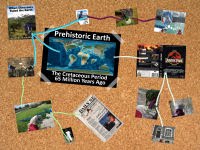


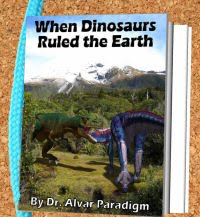

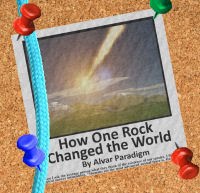
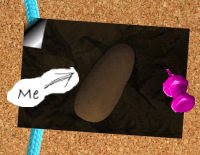
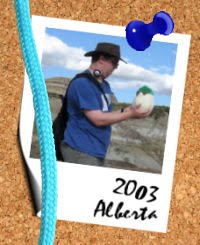




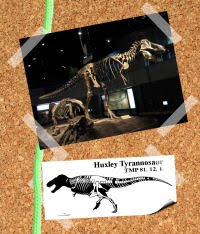




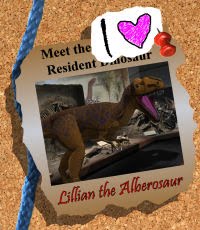



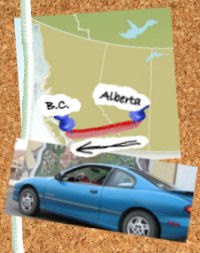






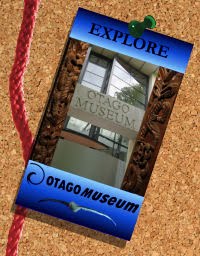


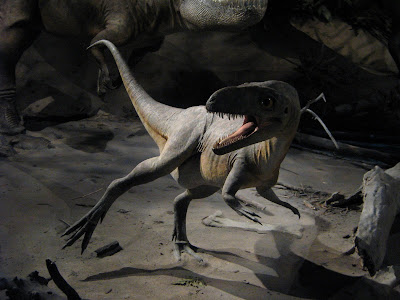

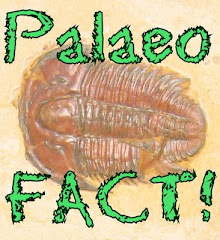
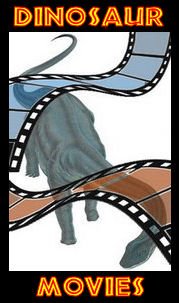






3 comments:
Oh yeah, Traum-baby! As your talent agent, I congratulate you on your Boneyard post. Great job! You sure know your albertosaurs...
One (maybe inappropriate) question though: Being two different animals, can you and Lil mate?
nice to meet Mr Tyrrell, I didn't know his story.
Whenever I hear/read "sarcophagus" I think about mummies, now I have Albertosaurus too! LOL
I saw Phil Currie explaining social behavior on tyrannosaurids for the JFC episode on T-Rex. He mentioned Alberta and Albertosaurus there.
Their teeth look like killing bananas
Wow!! I didn't know all that. So, Tyrell discovered the first Albertosaurus? Cool. And he wasn't a Paleontologist or fossil hunter, either? HOLY HADROSAUR!!!! Yeah, what Bond said! Can you and Lillian mate? (if it's too personal and innappropriate, you dn't have to answer.)
Post a Comment